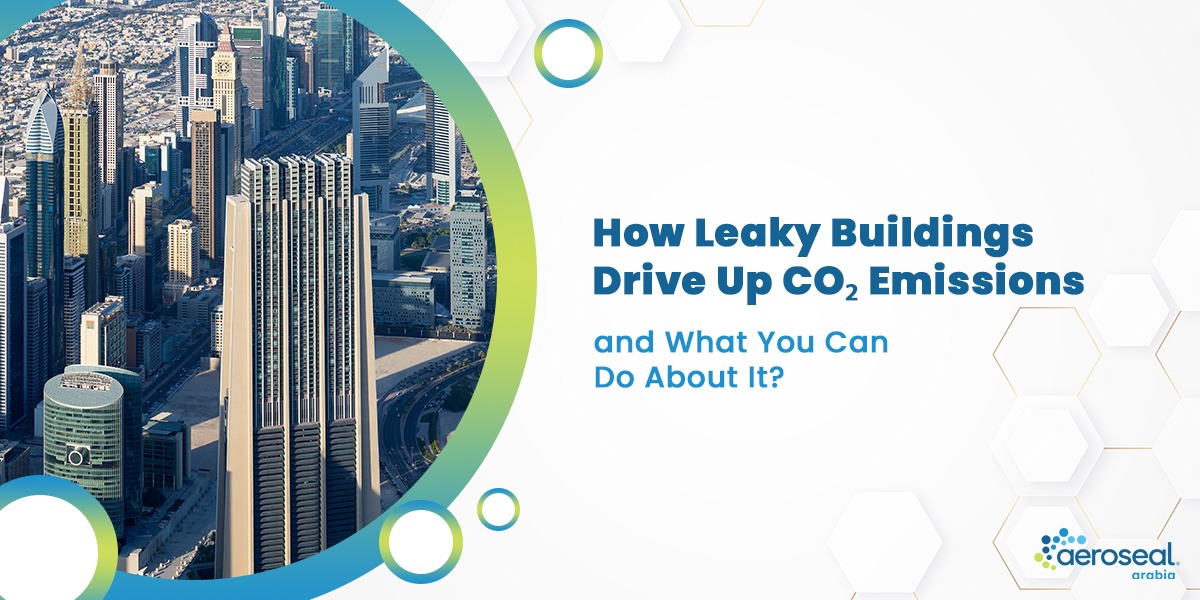
How Leaky Buildings Drive Up CO₂ Emissions – and What You Can Do About It
The Hidden Cost of Building Leaks
When we think about cutting CO₂ emissions, the conversation often focuses on renewable energy or efficient appliances. But there’s a silent contributor that’s often overlooked: leaky buildings. In Saudi Arabia, where cooling systems run for most of the year, gaps in walls, windows, roofs, and ductwork can allow conditioned air to escape forcing HVAC systems to work harder and consume more electricity. More energy use means more carbon dioxide released into the atmosphere.
Why Air and Energy Leaks Matter for the Environment
A leaky building is not just a comfort issue it’s an environmental one. Every kilowatt-hour of wasted electricity increases the demand on power plants, many of which still rely on fossil fuels. The result? Higher greenhouse gas emissions and a larger carbon footprint. Even minor leaks, when multiplied across thousands of homes and offices, can have a massive environmental impact.
Where Leaks Happen
Leaks can occur in multiple parts of a building:
- Air Ducts – Loose connections, holes, or cracks let cool air escape into unused spaces.
- Windows & Doors – Poor sealing allows outside heat to enter and cooled air to leave.
- Walls & Roofs – Insufficient insulation leads to constant temperature loss.
- Electrical & Plumbing Penetrations – Small gaps around pipes and wires add up over time.
The Link Between Energy Waste and CO₂ Emissions
In Saudi Arabia, much of the electricity used for cooling is generated from fossil fuels. That means every extra kilowatt used due to leaks produces avoidable carbon emissions. For example, sealing ductwork alone can reduce energy waste by up to 30%, a change that directly cuts CO₂ output.
How to Fix the Problem
The good news is that solutions exist, and many are quick to implement:
- Professional Duct Sealing – Technologies like Aeroseal Arabia can locate and seal hidden duct leaks without major disruption.
- Weatherproofing – Adding or replacing seals around windows and doors prevents unwanted air exchange.
- Improved Insulation – Upgrading wall and roof insulation helps maintain indoor temperatures with less energy.
- Regular Maintenance – Routine inspections of HVAC systems and building envelopes keep efficiency high.
Supporting Saudi Arabia’s Sustainability Goals
Saudi Arabia has committed to ambitious energy efficiency targets as part of its Vision 2030 plan. Building owners who take steps to seal leaks and improve energy performance not only save on utility costs but also contribute to the Kingdom’s long-term environmental objectives.
Frequently Asked Questions
- How do building leaks increase CO₂ emissions?
They force HVAC systems to work harder, using more electricity. Since much of the electricity is generated from fossil fuels, more energy use means higher carbon emissions. - What’s the fastest way to reduce leaks in a building?
Start with an energy audit to identify problem areas, then seal air ducts, improve insulation, and weatherproof openings. - How much can I save by sealing leaks?
Depending on the extent of the leaks, you could cut cooling costs by 15–30%, while also reducing your building’s carbon footprint. - Is duct sealing worth it in Saudi Arabia?
Yes. With the high demand for cooling, duct sealing pays off quickly in both cost savings and environmental benefits. - Can sealing leaks help with indoor comfort?
Absolutely. A well-sealed building maintains a consistent temperature, reduces hot and cold spots, and keeps out dust and pollutants.



